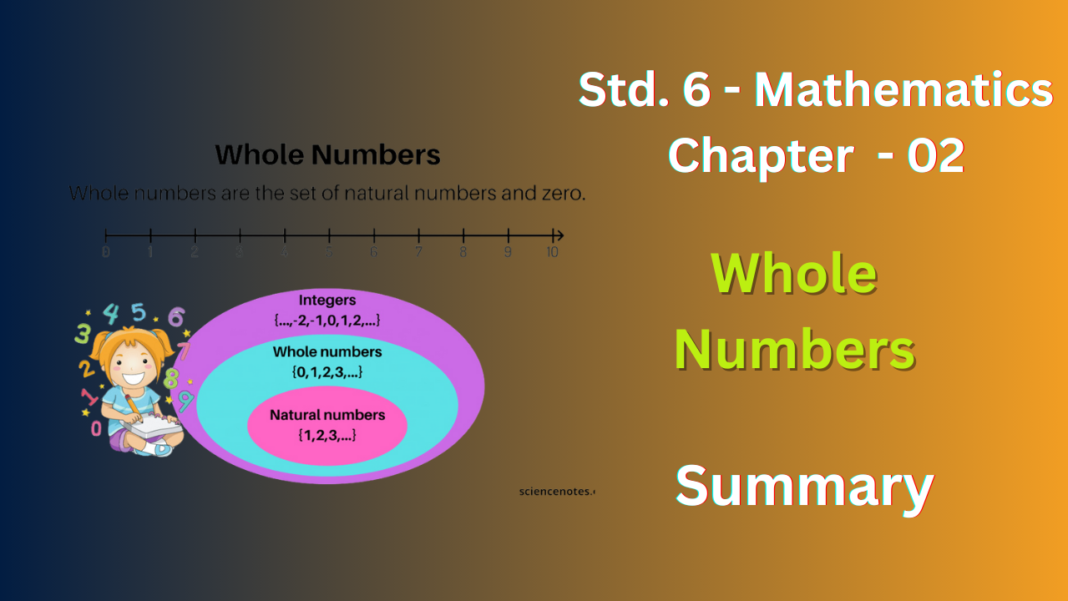NCERT Solutions for Class 6 Maths Chapter 2
The chapter “Knowing Our Numbers” in your 6th-grade math book sets the foundation for understanding whole numbers and basic operations.
The Number System:
- Natural Numbers: Numbers used for counting objects, starting from 1 and going on infinitely (1, 2, 3, 4, …).
- Whole Numbers: Natural numbers including 0. So, whole numbers are 0, 1, 2, 3, and so on.
- Place Value System: This concept explains the value of each digit in a number based on its position (units, tens, hundreds, thousands, etc.).
- Comparing Numbers:
- Techniques are introduced to compare numbers. This might involve considering the number of digits or looking at each place value one by one, starting from the leftmost place (highest value).
- Ordering Numbers:
- You’ll learn how to arrange numbers in a specific order:
- Ascending Order: Arranging numbers from smallest to biggest (e.g., 12, 15, 20).
- Descending Order: Arranging numbers from biggest to smallest (e.g., 20, 15, 12).
- You’ll learn how to arrange numbers in a specific order:
Depending on your specific textbook, the chapter might also cover:
- Forming Numbers: Creating different numbers using a given set of digits, making sure the digits don’t repeat.
- Representing Numbers on the Number Line: Visualizing numbers on a line where each point corresponds to a specific number.
Exercise 2.1
1. Write the next three natural numbers after 10999.
Ans :
- 10999 + 1 = 11000
- 11000 + 1 = 11001
- 11001 + 1 = 11002
2. Write three whole numbers occurring just before 10001.
Ans :
10001 – 1 = 10000 (Ten thousand)
10000 – 1 = 9999 (Nine thousand nine hundred ninety-nine)
9999 – 1 = 9998 (Nine thousand nine hundred ninety-eight)
3. Which is the smallest whole number?
Ans : The smallest whole number is 0 (zero).
4. How many whole numbers are there between 32 and 53?
Ans : There are 20 whole numbers between 32 and 53.
33, 34, 35, 36, 37, 38, 39, 40, 41, 42, 43, 44, 45, 46, 47, 48, 49, 50, 51, 52.
5. Write the successor of:
(a) 2440701
(b) 100199
(c) 1099999
(d) 2345670
Ans :
(a) 2440702
(b) 100200
(c) 1100000
(d) 2345671
6. Write the predecessor of:
(a) 94
(b) 10000
(c) 208090
(d) 7654321
Ans :
(a) 93 (Since 93 comes before 94)
(b) 9999 (Since 9999 comes before 10000)
(c) 208089 (Since 208089 comes before 208090)
(d) 7654320 (Since 7654320 comes before 7654321)
7. In each of the following pairs of numbers, state which whole number is on the left of the other number on the number line. Also write them with the appropriate sign (>, <) between them,
(a) 530, 503
(b) 370, 307
(c) 98765, 56789
(d) 9830415,10023001
Ans :
(a) 530 > 503 (Five hundred thirty is on the right of five hundred three on the number line.)
(b) 370 > 307 (Three hundred seventy is on the right of three hundred seven on the number line.)
(c) 98765 > 56789 (Ninety-eight thousand seven hundred sixty-five is on the right of fifty-six thousand seven hundred eighty-nine on the number line.)
(d) 9830415 < 10023001 (Nine million eight hundred thirty thousand four hundred fifteen is on the left of ten billion twenty-three thousand one on the number line.)
8. Which of the following statements are true (T) and which are false (F)?
(a) Zero is the smallest natural number.
(b) 400 is the predecessor of 399.
(c) Zero is the smallest whole number.
(d) 600 is the successor of 599.
(e) All natural numbers are whole numbers.
(f) All whole numbers are natural numbers.
(g) The predecessor of a two-digit number is never a single-digit number.
(h) 1 is the smallest whole number.
(i) The natural number 1 has no predecessor.
(j) The whole number 1 has no predecessor.
(k) The whole number 13 lies between 11 and 12.
(l) The whole number 0 has no predecessor.
(m) The successor of a two-digit number is always a two-digit number.
Ans :
(a) False (F): Zero is not a natural number. Natural numbers start from 1 and go on infinitely.
(b) False (F): The successor of 399 is 400, not the predecessor. The successor is the number that comes after.
(c) True (T): Zero is the smallest whole number. Whole numbers include 0 and all natural numbers.
(d) True (T): 600 is the successor of 599. The successor is the number that comes after.
(e) True (T): All natural numbers (1, 2, 3, …) are also whole numbers (0, 1, 2, 3, …).
(f) False (F): Not all whole numbers are natural numbers. Zero is a whole number but not a natural number.
(g) False (F): The predecessor of a two-digit number can be a single-digit number. For example, the predecessor of 10 is 9 (a single-digit number).
(h) True (T): One (1) is the smallest whole number.
(i) True (T): The natural number 1 has no predecessor. By definition, there’s no natural number before 1.
(j) False (F): The whole number 1 has a predecessor, which is 0.
(k) True (T): The whole number 13 lies between 11 and 12.
(l) True (T): The whole number 0 has no predecessor. Zero is the smallest whole number.
(m) False (F): The successor of a two-digit number can be a three-digit number. For example, the successor of 99 is 100 (a three-digit number).
FAQ’s
What topics are covered in Class 6 Maths Chapter 2, “Whole Numbers”?
NCERT Solutions for Class 6 Maths Chapter 2 cover various topics related to whole numbers, including understanding the concept of whole numbers, their properties, operations like addition, subtraction, multiplication, and division, and their application in real-life situations.
How do NCERT Solutions for Class 6 Maths Chapter 2 help in understanding “Whole Numbers”?
NCERT Solutions provide step-by-step explanations and solved examples that assist students in understanding the properties and operations of whole numbers. The solutions also include practice problems to reinforce learning and improve problem-solving skills.
Can Class 6 Maths Chapter 2 enhance numerical skills and problem-solving abilities related to whole numbers?
Absolutely! Class 6 Maths Chapter 2 focuses on building a strong foundation in understanding whole numbers, which is crucial for developing essential numerical skills and improving problem-solving abilities in various mathematical contexts.
What are some key concepts discussed under “Whole Numbers” in Class 6 Maths Chapter 2?
Class 6 Maths Chapter 2 explores fundamental concepts such as identifying whole numbers, understanding their properties like closure, commutativity, associativity, distributivity, and divisibility rules, and performing arithmetic operations with whole numbers.
How can students benefit from practicing Class 6 Maths Chapter 2?
By practicing NCERT Solutions for Class 6 Maths Chapter 2, students can strengthen their understanding of whole numbers, improve their mathematical reasoning skills, and gain confidence in solving numerical problems involving whole numbers effectively.









